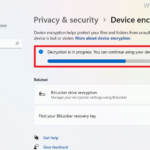How to use the system repair disc in Windows 8, 7 and Vista.
In a previous article, we mention the importance of the system repair disc creation to troubleshoot your system when your computer doesn't boot. In this article we will explain how you can use the system repair disc to troubleshoot your computer.
Step 1. Change Bios to boot from the CD/DVD Drive.
How to change the BIOS boot order to boot from the CD/DVD.
1. Enter the BIOS settings by pressing “DEL” or “F1” or “F2” or “F10”. *
* The way to enter into BIOS Settings depends by computer manufacturer.
Notice : If your computer supports UEFI, press the the corresponding button according to your computer’s manufacturer instructions.
2. Inside Bios menu, find “Boot Order” setting. This setting is commonly found inside “Advanced settings”.
Change the boot order to try booting first from “CD/DVD” drive.
3. Save and Exit Bios Setup.
Step 2. Place the system repair disk on your CD/DVD drive.
Press Any key to boot from CD, when the corresponding message appears on your screen.
Step 3. Start repairing your system.
Advice: The most safe action to repair your computer is to restore it in a previous working state.
Windows 7 or Vista
1. Choose the keyboard layout and press “Next”.
2. At the system recover options window, press “Next”.
3. Recovery tools options:
a. Startup Repair, fixes problems when your computer don’t start.
b. System Restore, helps you to restore your computer in a previous working point.
c. System Image recovery, recovers you computer using a previous created image.
d. Windows Memory Diagnostic, diagnoses your system memory for problems.
e. Command Prompt, helps you to troubleshoot your system using commands.
Make your preferred choice and start troubleshooting your computer.
Windows 8.
1. Choose the Keyboard layout: e.g. “US”
2. Choose “Troubleshoot”.
3. “Troubleshoot” Options:
The “Troubleshooting” Options available are:
a. Refresh your PC without loosing your files, or
b. Restore it, to its first installed state, or
c: “Advanced options”.
4. Advanced options menu:
a. System Restore: Restores your computer in a previous working state.
b. System Image Recovery: Recover your PC using an previous backup image.
c. Automatic Repair: Let Windows perform an automatic system repair.
d. Command Prompt: Troubleshoot your system by using the command prompt.
Make your preferred choice and start troubleshooting your computer.
We're hiring
We're looking for part-time or full-time technical writers to join our team! It's about a remote position that qualified tech writers from anywhere in the world can apply. Click here for more details.
- How to Disable or Remove BitLocker from Windows RE. - April 24, 2024
- FIX: Error 0x8007025d in Windows 10 Update. - April 22, 2024
- How to Disable Device Encryption in Windows 11/10. - April 17, 2024

![image_thumb[25] image_thumb[25]](https://www.wintips.org/wp-content/uploads/2013/02/image_thumb25_thumb.png)
![image_thumb[26] image_thumb[26]](https://www.wintips.org/wp-content/uploads/2013/02/image_thumb26_thumb.png)
![image_thumb[27] image_thumb[27]](https://www.wintips.org/wp-content/uploads/2013/02/image_thumb27_thumb.png)
![image_thumb[10] image_thumb[10]](https://www.wintips.org/wp-content/uploads/2013/02/image_thumb10_thumb.png)
![image_thumb[14] image_thumb[14]](https://www.wintips.org/wp-content/uploads/2013/02/image_thumb14_thumb.png)
![image_thumb[24] image_thumb[24]](https://www.wintips.org/wp-content/uploads/2013/02/image_thumb24_thumb.png)
![image_thumb[22] image_thumb[22]](https://www.wintips.org/wp-content/uploads/2013/02/image_thumb22_thumb.png)




May 10, 2021 @ 9:46 am
Your posts have always been wonderful and knowledgeable.
January 16, 2016 @ 7:17 pm
Windows 7 – What do I do if nothing is shown in the "System Recovery Options" window?
January 17, 2016 @ 1:28 pm
@Bob: 1. Press F8 at startup to enter Advanced boot options 2. Choose "Repair your computer"…
Get ready to solve your computer problems when Windows 8, 7 or Vista don’t boot.
February 18, 2013 @ 10:58 am
[…] * If you want to learn how to use system repair disk read this post. […]